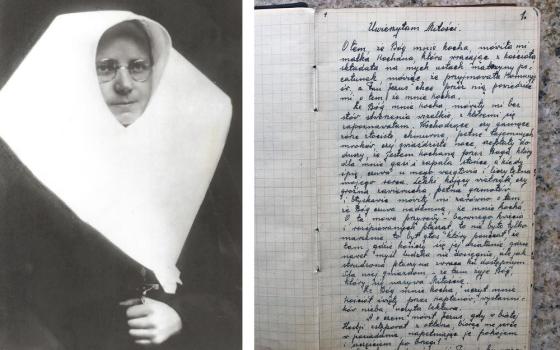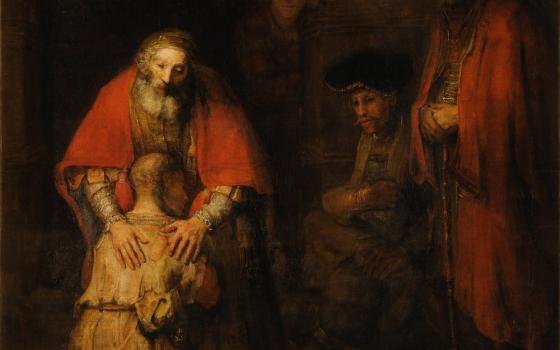If the year 2015 was dismal in the world of politics, as discussed yesterday, it was a far more hopeful year in the life of the Church, both the Church universal and the Church in the United States. Both here and elsewhere, that hopefulness has a single source, our amazing Pope Francis.
The Holy Father began the year with a trip to Sri Lanka and the Philippines. Millions, literally, turned out to see him, to pray with him, to cheer him on. From the interviews conducted with the people lining the streets of Manila, they did not seem “confused” by what the pope had to say, the way some high–ranking prelates and conservative commentators complain that they are confused. The Holy Father’s trip to South America again showed him at his best, especially his extraordinary speech to the meeting of social movements in Bolivia, which was a kind of mini–encyclical.
Then there was the trip to Cuba and the U.S. Did he hit a wrong note in either country? Nope. His speech before the U.S. Congress could not have been more deft. Reflect for a moment on the way he reminded the assembled legislators about the foundational role of the right to life, which made the Democrats start to squirm, followed immediately by his call for the abolition of the death penalty, which made the Republicans start to squirm. That is what a religious leader who exercises his ministry in the name of Jesus Christ should do when speaking to the powerful: Make them squirm. He left the U.S. Capitol and went to Catholic Charities and there he made no one squirm, but showered his love and his core respect for other human beings, especially those who are poor and suffering, on the homeless people gathered for lunch. The Holy Father’s visit to the prison in Philadelphia was, for me, the highlight of the entire trip. If watching him greet the prisoners one–by–one, shaking their hands, embracing them upon request, treating them with dignity and compassion, if that did not move you to tears, you have a heart of stone.
The Synod on the Family showed the opposition to the pope at full bore. I am told more than one curial cardinal told the pope he couldn’t do what he thought he could do. That nasty letter, signed by thirteen cardinals, impugning the integrity of the process and the pope’s choice of a drafting committee, marked a new low in papal opposition. Yet, that supposedly suspect drafting committee yielded a document that secured two–thirds support for each of its paragraphs and the text, as a whole, set a tone for the anticipated apostolic exhortation to call upon the Church to do more for those whose lives are not so neat and tidy, those who need the Lord’s mercy amidst the brokenness they have endured. Like the Master confronting the doctors of the law, he reminded the assembled pastors that it is not their place to burden the people of God, but to serve them. It was a stunning achievement not least because of the opposition the pope had to overcome. Indeed, it is worth noting that the intensity of the opposition the pope faces in the curia is a measure of his seriousness about reform. If it were just window dressing, as some of his critics on the left seem to think, there would not be so much opposition.
The next month, Pope Francis traveled to Africa and again the enthusiasm of the crowds was contagious, and the pope looked younger each day of the trip. His insistence on venturing into a war zone to preach the Gospel of Peace was amplified by his gesture of inviting an imam to ride in the popemobile with him as they crossed the dividing line between the Christian and Muslim neighborhoods. His visit not only amplified the Gospel of Peace, it has reignited the peace process in the Central African Republic. Where there was no hope, there is now hope. It is a young hope, and it faces many obstacles. Wars are not ended with one papal visit. But, it is hope nonetheless.
Who can forget Laudato Si’ and the impact of that document? Reaching into the often ignored riches of our tradition, the Holy Father provided the environmental movement with the one thing it lacked: It had the science, and it had some sound policy objectives, but it needed a moral framework and language. The Holy See, joined by lay–led groups like the Catholic Climate Covenant, did a superb job with the rollout of the encyclical. The morning it was released, we all went down to the National Press Club for the first–ever press conference featuring the president of the USCCB and the Cardinal–Archbishop of Washington on the occasion of an encyclical’s release. The Press Club assigned a small room, with about twenty seats, for the event. They had something like seventy reporters and had to commandeer an adjacent room for all the reporters.
And, on the single issue that has harmed the Catholic Church in this country more than any other, the sex abuse crisis, the pope has been decisive, ushering in the new papal commission’s work against all obstacles and removing Bishop Robert Finn from the governance of the diocese of Kansas City-St. Joseph, proving to all that those who look the other way will be held accountable for their inaction as well as the molesters, that a zucchetto is not a defense. As well, the pope removed Archbishop John Nienstedt from the governance of the archdiocese of St. Paul, Minnesota, and while he had not been convicted of negligence in a civil court as Bishop Finn was, his removal ended the “reverse Caiaphas” rule under which the local Church was expected to die for the sake of one man. If Pope Francis had done nothing else all year, I would call his actions on behalf of the faithful people of these two dioceses sufficient to say he had a significant year.
Turning to the leaders of the Church in the United States, the year has shown some deep divisions amongst them, especially in their enthusiasm for Pope Francis and the new directions he is trying to impart to the universal Church. Those of us in religion news business have taken to referring to “the troika” – Cardinal Sean O’Malley, Cardinal Donald Wuerl, and Archbishop Blase Cupich – who are the pope’s principal advocates on the U.S. bench, by reason of their prominent sees and their evident commitment to him. Cardinal Wuerl and Archbishop Cupich were also key players at the synod and Cardinal O’Malley continues his work on the Council of Cardinals.
Other bishops, like Bishop Robert McElroy, Bishop George Thomas, Bishop Christopher Coyne, Archbishop Joseph Tobin, Bishop Kevin Farrell and other bishops too, are also clearly supportive of the direction the Holy Father is taking. Those mentioned by name spoke up at either the June or November meeting to urge their fellow bishops to be more receptive to the pope’s message as the conference evaluates its priorities and plans. When you read their homilies or other talks, you can see the influence. And, a big shout out to Bishop Daniel Flores of Brownsville, Texas, who is of a more conservative intellectual bent, but who is also seriously engaging the Holy Father’s thought and bringing it to bear on his own intellectual and spiritual trajectory.
On the other hand, the current Vice-President of the USCCB, Cardinal Daniel DiNardo, and the immediate past President of the conference, Cardinal Timothy Dolan, both signed that letter at the start of the synod questioning the integrity of the process and the composition of the drafting committee. Along with Archbishop Joseph Kurtz and Archbishop Charles Chaput, Cardinals DiNardo and Dolan were among those opposing any changes in the pastoral practice of the Church as it relates to the divorced and remarried. If their publicly released interventions are any guide, they did not cover themselves in theological glory at the synod nor were they able to convince their fellow synod fathers to oppose any development of doctrine or practice. They do not like it when we in the press say they are opposed to the pope, but we are not blind.
The bishops’ meeting in November also highlighted the differences between where the pope is and where the U.S. bishops are. Compare his address to Congress with the bishops’ statement “Faithful Citizenship.” The Holy Father quite consciously did not once mention same sex marriage in his many talks during the papal visit, but the bishops inserted mention of the issue nine times in the final text. Some amendments improved the proposed document, and they took their first step away from the misuse of the concept of intrinsic evil, which was always the wrong framework for discussing public policy. But, bishops’ conferences move slowly and I am not overly worried. There is not much of a future for a Catholic bishop in opposition to the pope.
Other important events warrant a mention. Notre Dame’s decision to maintain its two theology course requirement was an important win. The Institute for Policy Research & Catholic Studies at Catholic University sponsored its second “Erroneous Autonomy” conference, highlighting the challenges posed by libertarian thought, and proposing the themes of Catholic social thought which could scarcely be more needed today, as discussed yesterday. The conference was held at the headquarters of the
I return to a thought I penned last week, on the occasion of the Holy Father’s birthday. I noted that when you compare pictures of then-Cardinal Bergoglio from a few years back, to photos of him today, he actually looks younger now. And, I think he has imparted that quality to the Church he leads. The Church feels and looks young again. The Gospel sounds fresh, not least because of the pope’s power to communicate it by gesture and simple language, dare I say, un-confusing language. Men who have lived their lives as priests and bishops, in full obedience to previous climates now find themselves free to be the kind of pastoral bishops they always have wanted to be. Instead of a constant stream of articles about a defensive Church, we see even in the mainstream media a greater appreciation for the riches of Catholicism. And, just yesterday, the guy who was fixing my computer was gushing about Pope Francis. Something is moving in the Church, and it is not wrong to believe it is the Holy Spirit. That was the story of the Church in 2015, a story of freshness and vigor. It was a great year.



